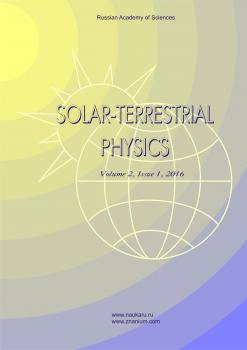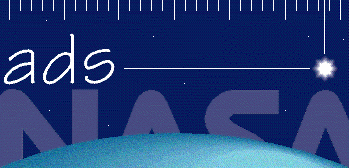Irkutsk, Russian Federation
Irkutsk, Russian Federation
Irkutsk, Russian Federation
We study the evolution of the photospheric magnetic field at the early stage of active region development. We use data on longitudinal component of the magnetic field and line-of-sight velocities from SOHO/MDI and SDO/HMI. The visual inspection of 48 cases of birth of active regions and the detailed analysis of the magnetic flux dynamics in 4 active regions have shown that at the time of emergence of a new magnetic field, the field of the following polarity is the first to be detected in the photosphere. The flux asymmetry of the leading and following polarities persists for several tens of minutes. The observed asymmetry of magnetic fluxes supports the results of the numerical simulation of emergence of the active region magnetic field in the upper layers of the convective zone, which has been carried out by Rempel and Cheung [2014].
magnetic field, active regions
1. Abbett W.P., Fisher G.H., Fan Y. The three-dimensional evolution of rising, twisted magnetic flux tubes in a gravitationally model convection zone. Astrophys. J. 2000, vol. 540, pp. 548-562. DOI:https://doi.org/10.1086/309316.
2. Bappu M.K.V., Grigoriev V.M., Stepanov V.E. On the development of magnetic fields in active regions. Solar Phys. 1968, vol. 4, pp. 409-420.
3. Barnes G., Birch A.C., Leka K.D., Braun D.C. Helioseismology of pre-emerging active regions. III. Statistical analysis. Astrophys. J. 2014, vol. 786, pp. 19-32. DOI:https://doi.org/10.1088/0004-637X/786/1/19.
4. Bumba V., Howard R. A study of the development of active regions on the Sun. Astrophys. J. 1965, vol. 141, pp. 1492-1501.
5. Caligari P., Moreno-Inserties F., Schüssler M. Emerging flux tubes in the solar con-vective zone. 1: Asymmetry, tilt and emerging latitude. Astrophys. J. 1995, vol. 452, pp. 894-902. DOI:https://doi.org/10.1086/175410.
6. Cheung M.C.H., Rempel M., Title A.M., Schüssler M. Simulation of the formation of a solar active region. Astrophys. J. 2010, vol. 720, pp. 233-244. DOI:https://doi.org/10.1088/0004-637X/720/1/233.
7. D’Silva S., Choudhury A.R. A theoretical model for tilts of bipolar magnetic regions. Astron. Astrophys. 1993, vol. 272, pp. 621-633.
8. Fan Y. The three-dimensional evolution of buoyant magnetic flux tubes in a model so-lar convective envelope. Astrophys. J. 2008, vol. 676, pp. 680-697. DOI:https://doi.org/10.1086/527317.
9. Fan Y., Fisher G.H., de Luca E.E. The origin of morphological asymmetries in bipolar active regions. Astrophys. J. 1993, vol. 405, pp. 390-401. DOI:https://doi.org/10.1086/172370.
10. Fan Y., Fisher G.H., McClymont A.N. Dynamics of emerging active region flux loops. Astrophys. J. 1994, vol. 436, pp. 907-928. DOI:https://doi.org/10.1086/174967.
11. Knoska S. The initial phase of development of chromospheric faculae. Bull. Astr. Inst. Chech. 1977, vol. 28, pp. 114-117.
12. Rempel M., Cheung M.C.M. Numerical simulations of active region scale flux emer-gence from spot formation to decay. Astrophys. J. 2014, vol. 785, pp. 90-109. DOI:https://doi.org/10.1088/0004-637X/785/2/90.
13. Schunker H., Braun D.C., Bireh A.C., Burston R.B., Gizon L. SDO/HMI survey of emerging active regions for helioseismology. Astron. Astrophys. 2016, vol. 595, pp. 107-117. DOI:https://doi.org/10.1051/0004-6361/201628388.
14. Stein R.F., Nordlund A. On the formation of active regions. Astrophys. J. 2012, vol. 753, pp. L1-L14. DOI:https://doi.org/10.1088/2041-8205/753/1/L13.
15. Tian I., Alexander D. Asymmetry of helicity injection flux in emerging active regions. Astrophys. J. 2009, vol. 695, pp. 1012-1023. DOI:https://doi.org/10.1088/0004-637X/695/2/1012.

















